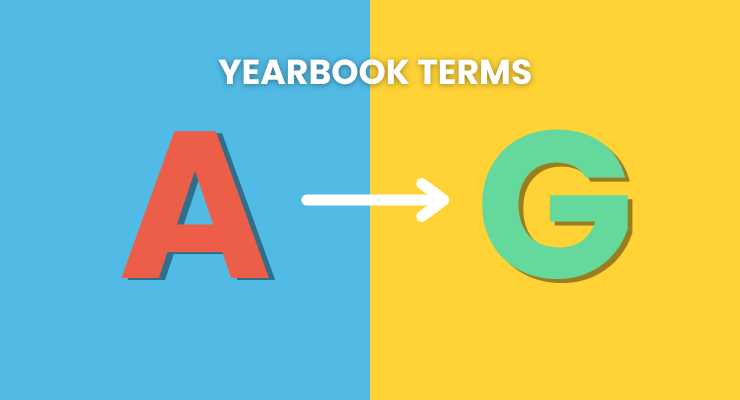Imagine entering an organization where no one speaks the same language. Coordinating tasks would be almost impossible. Frustration levels would be over the top as people step on each other’s toes and get at each other’s throats. That’s why great communication is the key to success in any organization. The foundation for great communication in any community starts with individuals agreeing on the meaning of symbols and terminology. This fact is no different for a yearbook committee. In the following sections, you will learn common industry terminology that will ensure that you can communicate effectively with your team.
Terms A to G
Bleed. The bleed is the extra space around the perimeter of your page. It is intentionally printed to allow any misalignment of the text on the page to be corrected when trimming the paper and ensures that the text is aligned at the edge. Typically an 1/8 of an inch is the standard bleed size.
Byline. A byline is a sentence at the beginning or ending of the copy that gives credit to the author of a story.
Candids. Candids are photos that are taken informally, especially without the subject having knowledge that their actions are being caught on camera. Candids are great for recording the authentic behaviour of individuals in their social environment.
Caption. A caption is a title or brief explanation of the content being displayed. It provides all the contextual knowledge of the subject matter including the answers to the who, what, when, where, and why of a photo and any other relevant knowledge.
Copy. Copy is the written text of an article, newspaper and advertisement that is intended to be printed.
CMYK (Cyan, Magenta, Yellow, Key Black). CMYK is a colour model that uses a subtractive method of producing colour when printing. In this process, the inks’ colours are altered by reducing (subtracting) the light wavelengths.
Dominant Element. A dominant element is the design feature on a page that immediately captures the attention of your readers. Dominant elements could be photos, titles, shapes, colours, lines, etc. These elements set the tone of the content for readers so that they understand how the content is intended to be perceived.
DPI. DPI stands for dots per inch. It is a measurement of an image’s resolution. As the DPI of an image increases, the details become clearer when printed.
Drop Cap. Drop cap is a design technique that uses a large, decorative capital letter at the beginning of a text block, which has a depth of two or more lines of regular text. It is often used to inform reader’s that they are about to read an important section in the text. They also serve as focal points to capture the reader’s attention.
Folio. Folio is a page numbering system, where the page numbers appear on the outside portion of pages, and most often at the bottom of the page. Yearbook titles and section titles may also appear in the folio.
Golden Ratio. The Golden Ratio is a mathematical rule that is used by artists to establish aesthetically pleasing design features. In yearbooks, it can be used to create different layouts. You can visualize the golden ratio by picturing a rectangle with its length being roughly one and a half (1.618) times its width.
Gutter. A gutter is the space down the center of the open yearbook where two pages are bound together. Text should not be placed in the gutter because it is a difficult area to read. A common practice is to make a ½” margin on both sides of the gutter to optimize readability.


